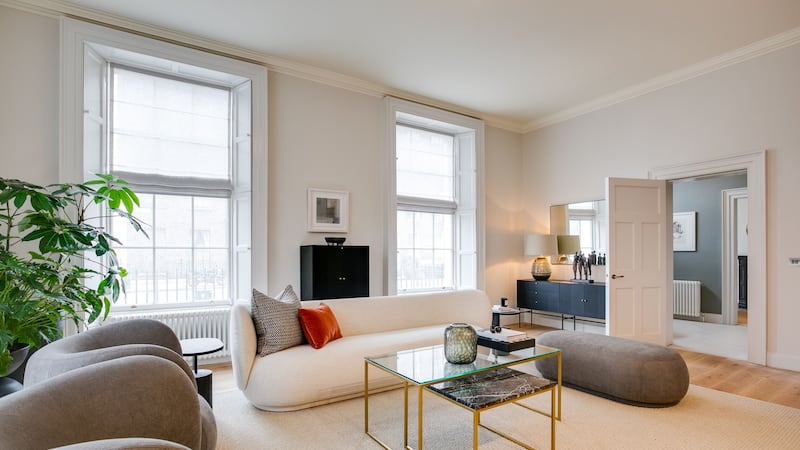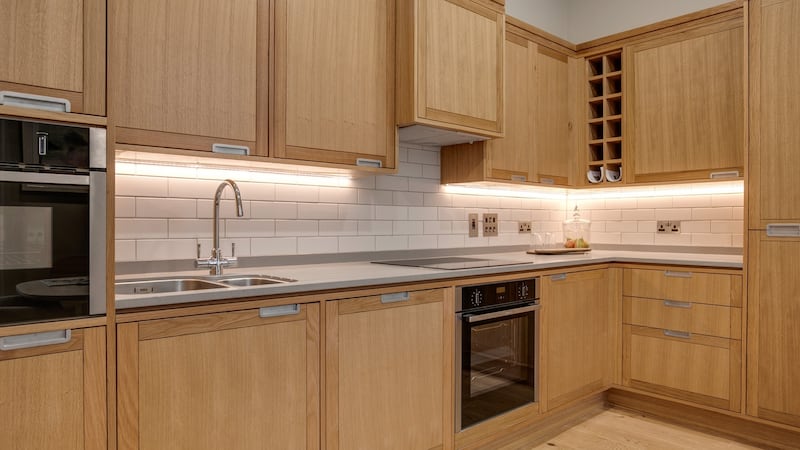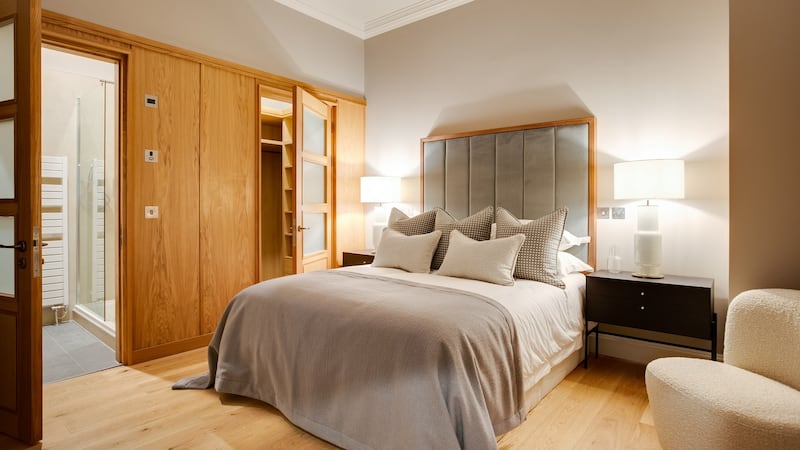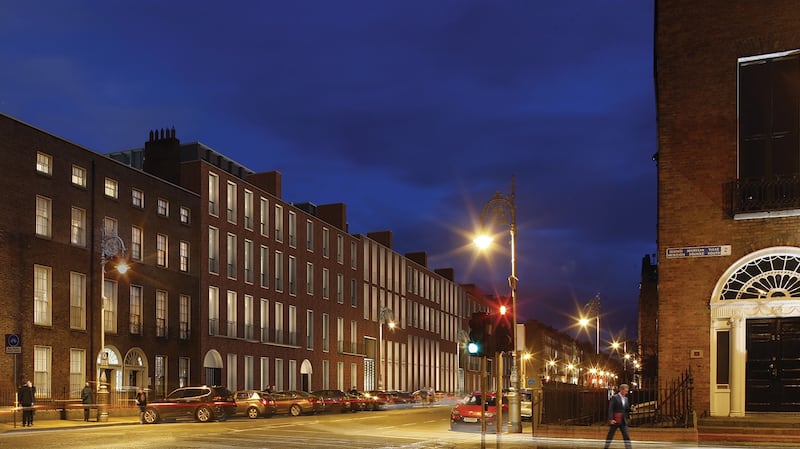The ESB headquarters on Fitzwilliam Street Lower was a controversial development from even before the electricity company moved in, so there wasn’t the usual outcry when the grim-looking building was demolished and major redevelopment programme began about four years ago.
What was probably not so obvious down through the years was that the five Georgian houses that border part of the site on the corner of Fitzwilliam Street Upper and Lower Mount Street were also used by the ESB as offices – their front doors were sealed in the 1980s and access was from the rear – and that these were also to be redeveloped as part of the plan, not as offices but as apartments.
Now complete and with just 11 units – the small number of homes in the four-storey over basement terraced houses gives an indication of their size – this scheme offers the rare opportunity of buying and living in contemporary comfort in the heart of Georgian Dublin, in spacious apartments with lofty ceilings and tall sash windows and where Merrion Square is your garden.
Architect Gráinne Shaffrey, a long-time advocate for city living, was tasked with bringing the houses back into residential use and her solution was to start from the position that she wanted the largest units possible to make them suitable for long-term and family living.



And the clever way she has reimagined the interior space of the houses means that nine of the 11 apartments have their own front door, while just two share an entrance.
On offer are four two-bed duplexes, two two-bed apartments, one three-bed duplex, and three three-bed triplexes; the latter are aptly called townhouses because each takes up the three top floors with spacious staircases and landings.
Sizes range from 95sq m (1,023sq ft) for the smallest two-bed to 244.5 sq m 2,632 sq ft for the largest three-bed. Prices range from €635,000 to €1,595,000, with just four units priced under €1 million. They are Ber exempt.
A key part of the design for Shaffrey was to give each unit a good-sized private terrace, which is a rare thing in a period property conversion. They are to the rear and face into the new office block, so they are not the most scenic, but they at least give residents their own private outdoors space of a usable size.
“I know what it’s like to live in an apartment in the city and know the benefit of an open-air space,” says Shaffrey.
Carving up tall period houses into units has typically involved at least one unit per floor, but Shaffrey was far more imaginative in her approach.
The least expensive apartments are the four two-bed duplexes which have their front doors at basement level. Here the two double bedrooms and bathroom are downstairs and the kitchen is in the return while upstairs the living room with its lovely original proportions and sash window is at street level.


And that’s key to Shaffrey’s design “of working with what you have inherited”, so there is very little carving up of the beautifully proportioned rooms; buyers of apartments, for example, will have hallways with period dimensions.
“There’s a lot of wall space, a lot of opportunity for new owners to express themselves.”
The three-bed townhouses have large bedrooms and fine living rooms, and the largest one has an eat-in kitchen of a scale more typically found in a suburban house.
The challenge in converting a period property is locating bathrooms and kitchens, and here Shaffrey has located them in a newly built return which works perfect for the very smart contemporary bathrooms.
What it means, though, for the kitchens in many apartments, each with bespoke oak units, is that they are on half landings and have no space for even the smallest table.
The exterior of the houses have been sympathetically restored but inside there were few period features such as fireplaces and plasterwork to salvage as they mostly disappeared pre-1980.
In designing the interiors, Shaffrey limited her use of materials to oak, glass and metal so wall panelling, floors and doors are oak and where there would have been a fireplace she has designed a feature oak display and storage unit. The doors in the kitchens are contemporary, oversized steel and glass, to let hallways benefit from “borrowed light”. Most units have sizable storage spaces at basement level.
The development, for sale through Savills, is called Merrion Park, presumably to hammer home the fact that Merrion Square is just across the road, though it’s hard to see residents bothering much with that name. Why would you when you have your own hall door with a number and a prestigious street name to go with it?











